On May 20, the U.S. Occupational Safety & Health Administration (OSHA) published a final rule 1 to update the Hazard Communication Standard (HCS) from the Globally Harmonized System of Classification & Labeling of Chemicals (GHS) Revision 3 to GHS Revision 7 with elements of Revision 8. OSHA made these amendments to not only enhance worker protections, but to also align with Health Canada’s Workplace Hazardous Materials Information System (WHMIS).
The scope and framework of the HCS have not changed. Chemical manufacturers and importers are still responsible for providing information about the hazards of chemicals they produce or import, and not every safety data sheet (SDS) and label is impacted. Even so, it’s important to be aware of the various changes.
OSHA has created materials to help highlight the various areas that have been amended, including a Questions & Answers document 2 for the update and a side-by-side comparison document.3 I have also called out some of the changes that I think are relevant for SPRAY readers:
• Label and SDS updates align primarily with GHS Revision 7.
• OSHA had originally proposed to require that a label include the date a chemical is released for shipment; however, OSHA did not implement this change after reviewing comments from stakeholders. Chemicals that have been released for shipment, and are awaiting future distribution, do not need to be relabeled with an update; however, companies must provide an updated label for each individual container with each shipment.
• The existing Flammable Aerosols hazard class (Appendix B.3) has been expanded to include non-flammable aerosols. OSHA is also revising a note (now B.3.1.2.1) to explain that aerosols do not fall within the scope of gases under pressure, but may fall within the scope of other hazard classes.
o OSHA will not allow the optional use of the compressed gas pictogram for aerosol products because it would introduce inconsistency between labels of similar products, cause confusion for downstream users and lead to “over warning.”
• OSHA has included special labeling provisions for 3mL and 100mL small containers, similar to Health Canada’s WHMIS requirements.
• While OSHA still allows the use of concentration ranges when the exact percentage is claimed as a trade secret, OSHA has aligned with the prescribed concentration ranges used by Health Canada’s WHMIS.
• OSHA is allowing the use of non-animal test methods from GHS Revision 8 for skin corrosion/irritation.
OSHA developed a tiered approach for companies and employers to comply with the amended HCS. The final rule takes effect July 19, 2024, and companies should be aware of the following compliance dates:
• Substances
o Manufacturers, importers and distributors that evaluate substances shall be in compliance with all modified provisions no later than Jan. 19, 2026.
o All employers shall, as necessary, update any alternative workplace labeling used by July 20, 2026.
• Mixtures
o Chemical manufactures, importers and distributors that evaluate mixtures shall be in compliance no later than July 19, 2027.
o All employers shall update any alternative workplace labeling for mixtures by Jan. 19, 2028.
Beginning July 19, 2024, companies may comply with either the 2012 HCS (previous standard) or the new amended standard until the compliance dates noted above.

It should be noted that Health Canada’s compliance dates are before OSHA’s and previous attempts at delaying those dates have been for naught, as Health Canada was not willing to extend without knowing when OSHA’s compliance dates will be. Hopefully, with OSHA’s final rule published, we will be able to work with the Canadian Consumer Specialty Products Association (CCSPA) and other allied Canadian trade associations to align the compliance dates between Canada and the U.S.
For further information, please contact me at ngeorges@thehcpa.org. SPRAY
On April 17, the British Aerosol Manufacturers’ Association (BAMA) will host our 6th face-to-face Innovation Day at the Royal Armouries in Leeds, UK. It has grown from a relatively humble event back in 2017 to become an important date for us at BAMA. It gives us not only the opportunity to think about how the aerosol industry can progress for the future, but also a chance to come together, catch up with old friends and make new ones.
The question often posed to me is What is innovation? Having worked as an Innovation Manager for a major blue chip company, I have come to realize that this is a very open and subjective question. For some, innovation is groundbreaking, cutting-edge technology, pushing the limits of science, engineering and manufacturing. It can also be finding a new application for a well-known, mature technology. For others, innovation is simply something you don’t know about.
Capturing innovation from all corners
At BAMA’s Innovation Day, we try to put together a mixture of different ideas to attract as many people from across the industry as possible. We like to bring in engineering companies, chemical suppliers and formulators, consultants who can help develop new products—from concept through to manufacturing—and we deliberately ask for presentations concerning technology that could be used as an alternative to a pressurized aerosol dispenser.

The 2024 event is sponsored by Jago-Pro, a filler and formulator based in Poland. Jago-Pro picked up the baton on innovation many years ago and it continues to push the boundaries of what aerosol technology can do. Their team once presented me with a tinplate can that, bizarrely, had an actuator on either end. This turned out to be a single can with two bag-on-valve (BOV) systems inside—one that contained a depilatory product, while the other contained a skin moisturizer for use after depilation. It was a very simple application of existing technology applied in a completely unique way. I haven’t yet seen anything on the market using this idea; some products are ahead of their time.
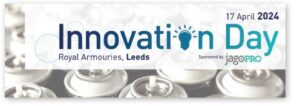
Achieving net-zero through aerosol innovation
In 2017, we were given a talk examining fundamental research into the production of aerosol propellant gases from waste. In 2023, we had presentations on the scale-up of production of liquefied petroleum gas (LPG) and dimethyl ether (DME) at a semi-industrial level from waste. These are the sorts of developments that will help our industry meet our net-zero targets while retaining the product performance liquified gases offer.
The program for 2024 is pretty much set. We have new developments in equipment for aerosol components and filling lines, new ideas on how to process and recycle aerosols and a consultant who helps transform off-the-wall ideas and turn them into new products.

The latest developments on plastic aerosols, and a non-aerosol twist spray, will feature alongside presentations on one-piece tinplate containers, advice on how to develop sustainable product formulations and a dive into future trends for the aerosol industry.
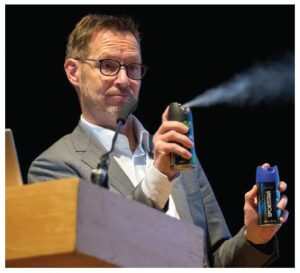
This year’s speaker program once again reflects the broad and varied interpretations of what innovation is. If any of these subjects look to be of interest, we would love to see you in Leeds. The event is free to attend; we just need to know if you are coming to make sure there is enough food and drink to keep everyone going throughout the day.
For more information on this year’s Innovation Day, please visit: bama.co.uk/event/91. SPRAY
SCAQMD
In March, the South Coast Air Quality Management District (SCAQMD) in California held its second Work Group meeting on Rule 1151 Motor Vehicle & Mobile Equipment Non-Assembly Line Coating Operations, commonly called the Auto Refinish Rule, to discuss amendments. The Rule is primarily being amended to prohibit the use of two compounds: Para-Chlorobenzotrifluoride (PCBTF or Oxsol) and Tert-Butyl Acetate (TBAC). These two compounds have a volatile organic compound (VOC)-exempt status with SCAQMD; PCBTF is fully VOC-exempt while TBAC is partially exempt in the district. The chemicals are being prohibited due to toxicity concerns. SCAQMD’s sister agency, the Office of Environmental Health Hazard Assessment (OEHHA), has listed these chemicals as Toxic Air Contaminants in the State of California. As an “Air Toxic,” the chemicals have been targeted by the SCAQMD Executive Board to be prohibited from use, even if it means resulting higher VOC emissions.
This is huge, as SCAQMD is willing to possibly raise VOC limits and allow for higher VOC emissions. Staff has released a survey for manufacturers to fill out on how much and where PCBTF and TBAC are are being used in Automotive Coatings.
The survey deadline was March 1, 2024. As we go to press, SCAQMD staff has only received three returned surveys from Industry. However, more submissions are expected.
Staff would like to provide a path for manufacturers to quickly replace these chemicals in Automotive Coatings. It has suggested that it may be willing to allow the temporary use of products that are formulated to comply with National and/or European standards in the SCAQMD. Again, this is another important action by staff. By allowing the use of these other standards, Industry may be able to more quickly transition away from TBAC and PCBTF in Automotive Coatings.
Staff will continue to review the survey data and work with Industry to determine the best way forward. SCAQMD plans to complete this rule in Q4 2024, so time is short.
In addition to Rule 1151, a few other rules in the district are being reviewed for PCBTF and TBAC:
• Rule 1401 (Air Permitting) is in the works;
• Rule 1171 (Degreasing) will likely prohibit these compounds; and
• Rule 1113 (Architectural Coatings) will likely start soon.
This is an important issue for any company that uses PCBTF or TBAC in products. As well, we need to be concerned with how SCAQMD activity will affect other jurisdictions. Will CARB likely look at products containing PCBTF? Remember, TBAC has never been exempted as a VOC by the California Air Resources Board (CARB), so should be of lesser concern for CARB. Stay tuned more to come.
CARB
There is still no news on the release of the CARB Consumer Products VOC survey. Industry has been waiting for months for this survey to be released, as it will trigger the next round of CARB Rule development. Staff has stated the survey will be released in the Spring of 2024, which, I believe, is technically now. We are hoping to see the survey soon.
Other State Activity
The good news is that, so far, there is no news regarding new Consumer Products rulemaking from either Clark County, NV, or the States of Oregon and New Jersey. SPRAY
The Midwest Society of Cosmetic Chemists (Midwest SCC) Teamworks 2024 event is underway at the Donald E. Stephens Convention Center in Rosemont, IL
The next edition will be March 31, 2026, at the same venue. More info: MidwestSCC.org
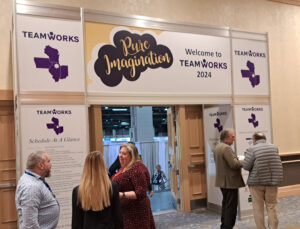

Paris Packaging Week 2023—featuring the Aerosol & Dispensing Forum and Packaging of Perfume, Cosmetics & Design and Packaging of Premium & Luxury Drinks Paris (ADF&PCD and PLD Paris)—officially opened on Jan. 25 at Paris Expo Porte de Versailles, Paris, France. The event will wrap up on January 26.
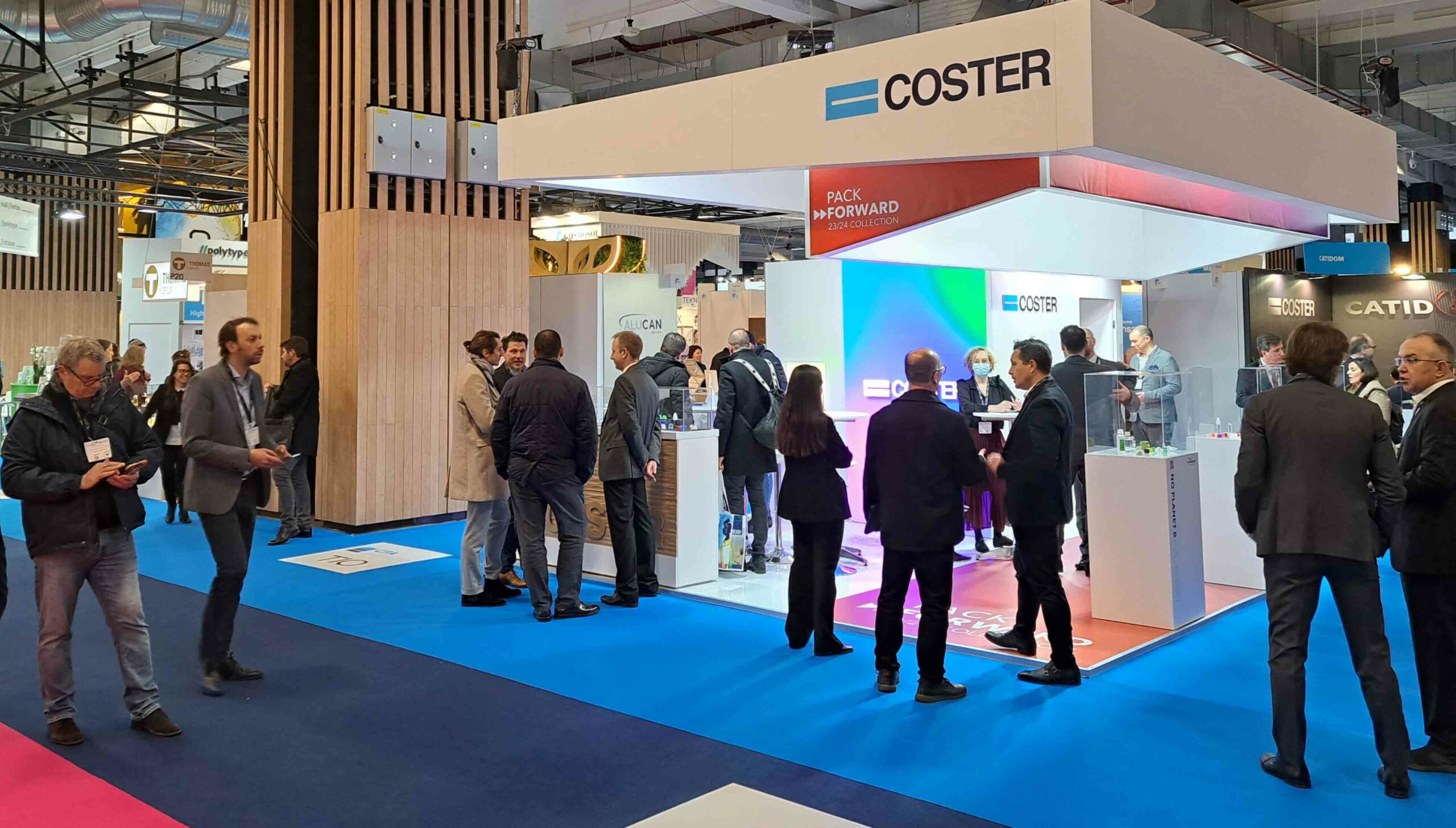
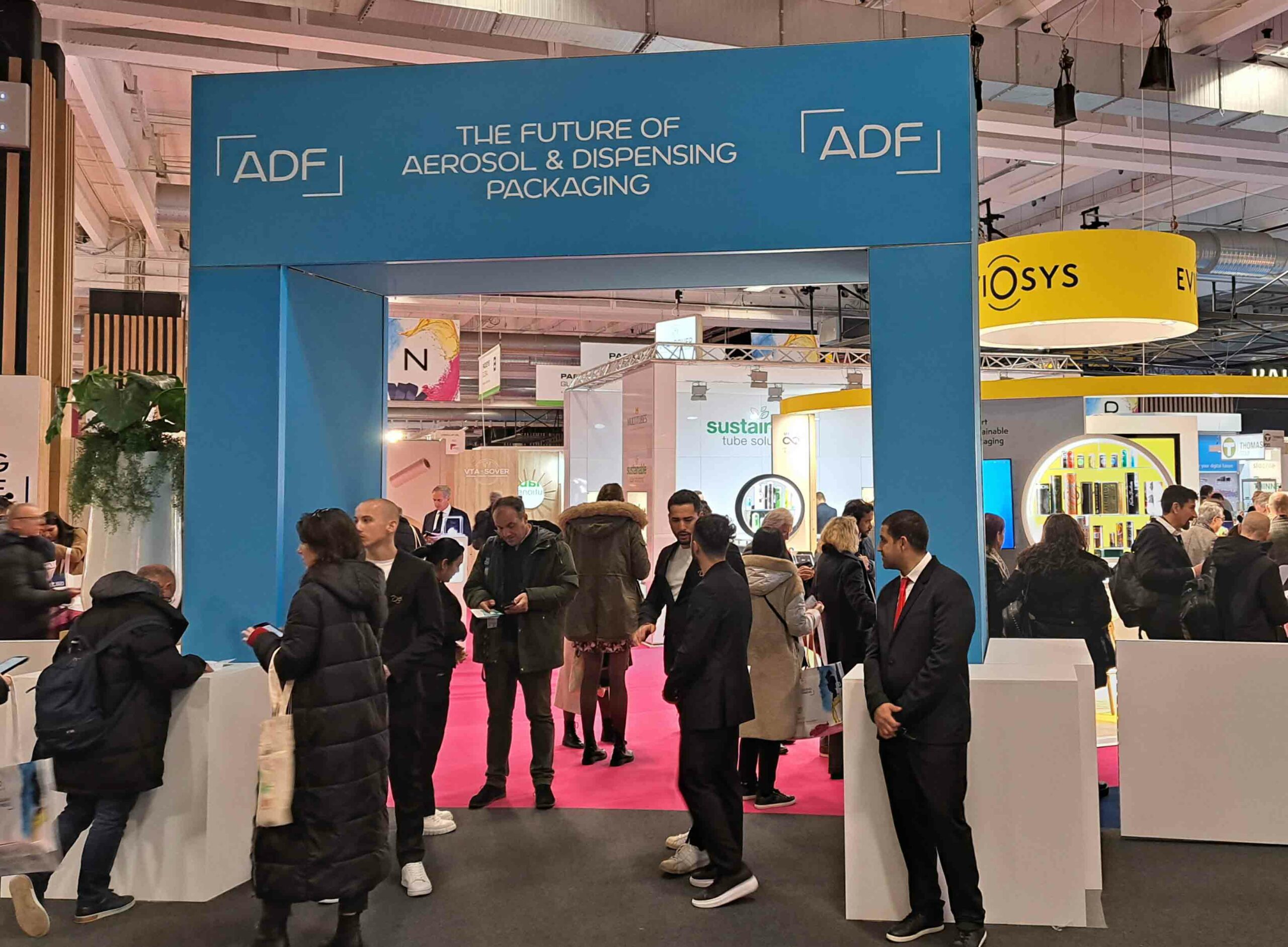
From the Household & Commercial Products Association (HCPA):
Last year, the Consumer Product Safety Commission (CPSC) received a petition from the NGO Families United Against Inhalant Abuse (FUAIA) to initiate a rulemaking for aerosol duster products containing HFC-152a. This summer, the CPSC Commission deferred the petition as CPSC staff was against the requirement of a bitterant agent and the proposed labeling by FUAIA but wanted to explore potential options that could mitigate risk of misuse and abuse of these products.
CPSC has asked ASTM to explore potentially creating a new standard for aerosol duster products. ASTM has been contacting potential parties that would have interest in such activity, including HCPA. Other parties include FUAIA, academics, and behavioral scientists. As CPSC staff has rejected the initial petition ideas, I would not anticipate these as potential items for ASTM to work on; however, ASTM will be soliciting other potential ways they can create a standard.
ASTM will conduct an exploratory meeting on January 25 at 2pm Eastern to discuss whether a new standard can be created. If there is not interest from stakeholders to create a new standard, or it appears that parties cannot work together on a new standard, ASTM will advise CPSC that they will not proceed forward. It is critical that industry participate in this meeting (I plan to be in attendance) to share our perspective as ASTM will proceed based on the feedback received during this call. You do not need to be an ASTM member to attend and participate.
For more info or to get the link to join the meeting, contact ngeorges@HCPA.org
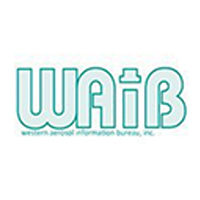 The Western Aerosol Information Bureau (WAIB) announced its 2022–2023 Board of Directors:
The Western Aerosol Information Bureau (WAIB) announced its 2022–2023 Board of Directors:

WAIB Board of Directors members included (L to R) Jeff Kronforst, Catherine Nkoutche and Bill Wood.
Directors:
WAIB also announced that the next WAIB/National Aerosol Association (NAA) Conference is set for Oct 9–11, 2023 at the Hyatt Regency Lake Tahoe Resort, Spa & Casino, Incline Village, Lake Tahoe, NV. It will include a paddle wheel riverboat casino night aboard the Delta King.

RAYMOND
A little over five years ago, I stopped working in the aerosol industry and started working for the industry. I had big shoes to fill, replacing Doug Fratz at the Consumer Specialty Products Association (CSPA), now the Household & Commercial Products Association (HCPA). I was no longer helping put products in the hands of customers for one company. Instead, I became a representative for the entire supply chain, helping to communicate how aerosol products are safe and beneficial to consumers and workers. One way I do this is by sharing timely and relevant information with you, the readers of SPRAY Technology & Marketing.
When I joined the industry, I kept hearing that we were constantly reacting to legislative and regulatory issues. As I’m sure you’ll agree, there’s been plenty to react to in the last five years, such as the California Cleaning Product Right to Know Act of 2017, legislative limits on 1,4-dioxane in products, the American Innovation & Manufacturing (AIM) Act, the 2021 California Air Resources Board (CARB) amendments and Extended Producer Responsibility.
These changes seem to be coming at us faster than before, but change is something businesses need to accept—whether it’s due to new legislation, updated regulations or changes in consumer behavior. Failure to adapt and innovate could cause businesses to be left behind.
There’s even more on the horizon that we, as an industry, need to prepare for. In the next five years, there will be changes to the Occupational Safety & Health Administration’s (OSHA) Hazard Communication Standard, updates to the Federal Trade Commission’s (FTC) Green Guides, different labeling requirements for Proposition 65, additional activity by CARB on the next round of amendments to the volatile organic compound (VOC) regulation for consumer products, risk management actions under the Toxic Substances Control Act (TSCA) and a changing landscape on how we dispose of products and manage sustainability efforts. Since I started writing this column in August 2017, it’s been my goal to provide HCPA members and SPRAY readers with as much time as possible to prepare for and react to these changes.
Another goal of mine working for the industry is being proactive, which can take considerable time and resources to achieve. One activity HCPA has undertaken is a 20+ year effort to develop the data and information needed to convince the U.S. Environmental Protection Agency (EPA) to add aerosol containers to universal waste programs. So far, 32 States have modified their hazardous waste regulations to include aerosol containers, and HCPA will continue to advocate in the remaining 18 States and the District of Columbia.
More recently, HCPA and the Can Manufacturers Institute (CMI) launched the Aerosol Recycling Initiative, which aims to increase recycling and onpack recyclability messaging. The initiative’s goals are to achieve at least an 85% recycling access rate for all aerosol containers by 2030, which means that households have the ability to recycle their empty cans in their local recycling programs and label at least 90% of aerosol containers as recyclable with messaging about how to properly do so.
Working with a team of consultants (Gersham, Brickner & Bratton [GBB], Eunomia Research & Consulting and Jensen Hughes), the Initiative will:
• Develop data on the perceived risks of recycling aerosol products.
• Conduct an economic and environmental assessment to demonstrate the benefits of recycling aerosol products.
• Consult with material recovery facilities (MRFs) regarding their operations related to the handling of aerosol containers.
• Establish best practices to communicate with consumers how to recycle aerosol products when they are finished.
While it’s difficult to be proactive when there are so many issues that require our immediate attention, we must always be thinking about ways to grow and sustain the aerosol industry, such as streamlining shipping requirements, looking more closely at inhalation toxicity or continuing to showcase the sustainability of the aerosol delivery form.
One of the strongest predictive tools—and something I write about regularly for SPRAY—is the Aerosol Pressurized Products Survey. The Survey reports on the unit production of aerosol products, valves and containers in the U.S. to provide a comprehensive snapshot of the aerosol industry. This helps identify potential opportunities within product categories, reassess sales strategies and plan for future production and investments. It is also beneficial information to have when communicating with external stakeholders, such as legislators and regulators. That’s why I always make such a strong push for participation in the Survey. Without your input, we can’t generate accurate results, and that is detrimental to the aerosol industry.
I’d like to close by saying Thank You for letting me represent the aerosol industry. It’s been an amazing five years and I look forward to the next five, working on your behalf. For more information or to get involved, please contact me at ngeorges@thehcpa.org. SPRAY
Claude-Bernard Michelot (Technima), President of the French Aerosol Committee (CFA), has announced his retirement for the start of 2022. He is succeeded by Nathalie Thys (GSK) as President of the CFA. Laurent Flond (L’Oréal) has assumed the role of VP and Nicholas Deprez (Trivium Packaging) will remain as Treasurer.